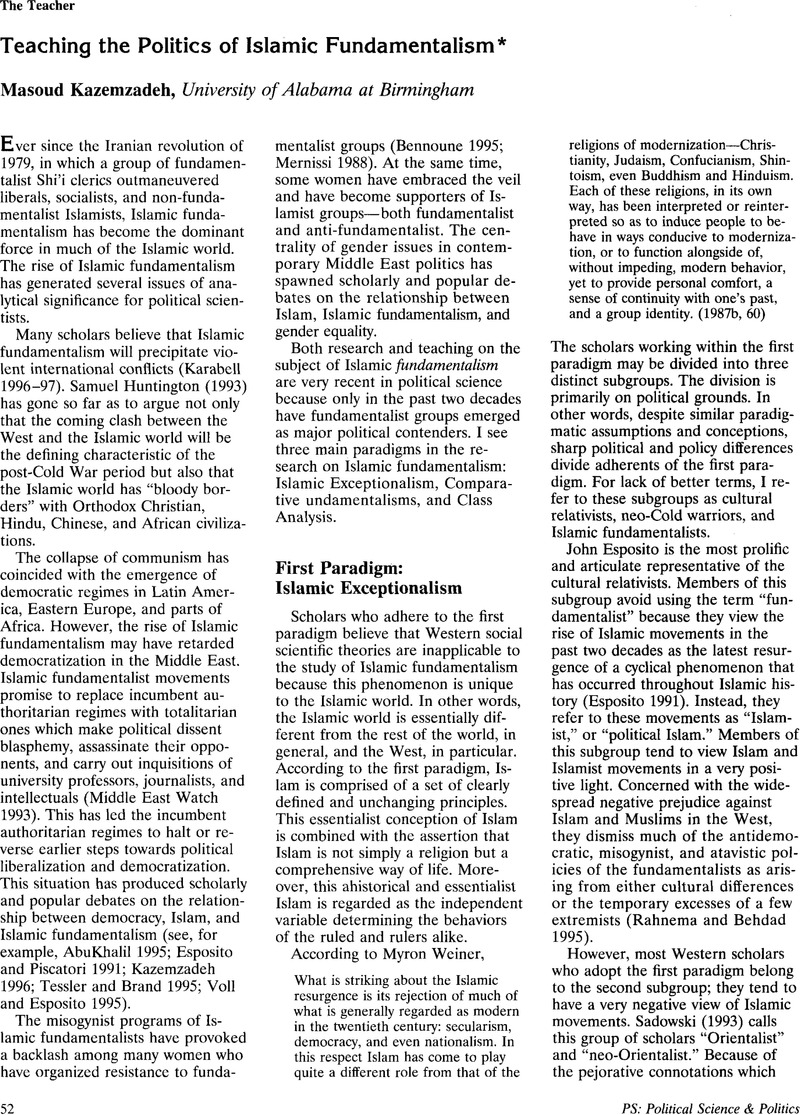Article contents
Teaching the Politics of Islamic Fundamentalism
Published online by Cambridge University Press: 02 September 2013
Abstract

- Type
- News
- Information
- PS: Political Science & Politics , Volume 31 , Issue 1: 30th Anniversary Issue , March 1998 , pp. 52 - 59
- Copyright
- Copyright © The American Political Science Association 1998
Footnotes
I wish to thank Mary E. Guy, Carol B. Thompson, Mark E. Kann, Nora Hamilton, Laurie Brand, Gloria Badal, and the anonymous reviewers for their comments and criticisms, which have enriched this article. I am solely responsible for any errors of fact or interpretation.
References
- 5
- Cited by




